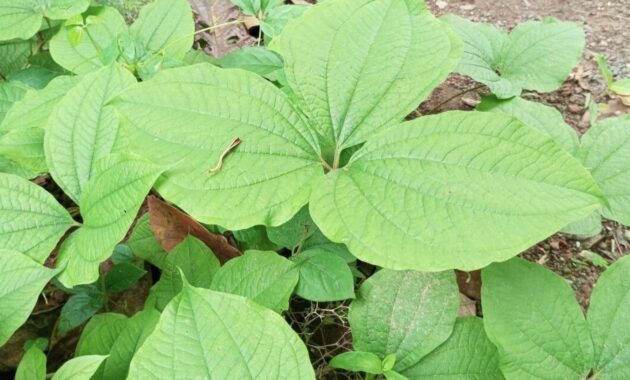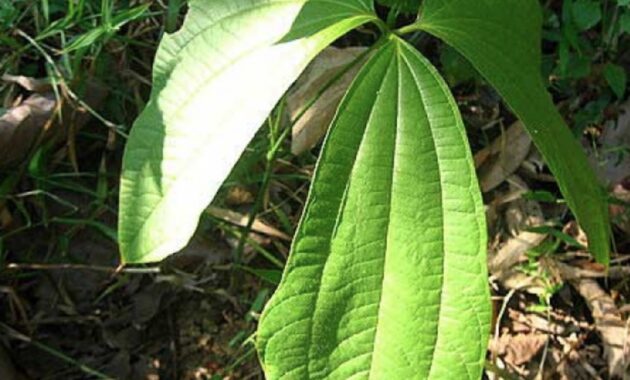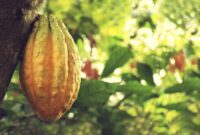
Have you ever heard of Dioscorea hispida? If not, you’re in for a treat! This fascinating plant, also known as bitter yam or hispid yam, is a staple in many tropical regions and is packed with history, culinary uses, and health benefits. I first encountered this remarkable tuber during a trip to Southeast Asia, and it sparked my interest in traditional foods. Let’s dig into what makes Dioscorea hispida so special!
What is Dioscorea hispida?
Dioscorea hispida is a species of yam native to the tropical regions of Asia, Africa, and the Pacific Islands. It’s part of the Dioscoreaceae family, which includes many other types of yams. Unlike the sweet yams we often see in grocery stores, Dioscorea hispida has a distinctively bitter taste when raw, which can be off-putting to some but adds a unique flavor to various dishes when prepared correctly.
Characteristics of Dioscorea hispida
- Scientific Name: Dioscorea hispida
- Common Names: Bitter yam, hispid yam, wild yam
- Native Range: Found primarily in tropical Asia, Africa, and some Pacific islands.
- Growth Habit: This yam is a climbing vine that can reach up to 3-4 meters (about 10-13 feet), requiring support as it grows.
- Leaves: The leaves are heart-shaped and can grow up to 15 cm (approximately 6 inches) in length.
The Tubers of Dioscorea hispida
The tubers of Dioscorea hispida are the plant’s edible part. They can grow quite large, sometimes weighing up to 2 kg (around 4.4 pounds). The first time I tried cooking with bitter yam, I was taken aback by its robust size and rough exterior. Once peeled, however, it revealed a creamy white flesh inside that had so much potential.
- Taste: As mentioned earlier, it has a bitter flavor when raw, which diminishes significantly once cooked. It can be a bit challenging to work with if you’re not used to it, but trust me—it’s worth the effort.
- Nutritional Value: This yam is a good source of carbohydrates and contains essential vitamins and minerals. It’s particularly high in vitamin C and fiber, which makes it a great addition to a balanced diet. Here’s a quick look at its nutritional content:
| Nutritional Component | Amount per 100g |
|---|---|
| Calories | 118 kcal |
| Carbohydrates | 28 g |
| Protein | 2 g |
| Fat | 0.1 g |
| Fiber | 3 g |
| Vitamin C | 14 mg |
Growing Dioscorea hispida
If you’re intrigued by the idea of growing your own Dioscorea hispida, here’s what I learned about its cultivation:
- Climate Requirements: Dioscorea hispida thrives in tropical climates with high humidity and regular rainfall. If you live in a region with these conditions, you’re already set up for success.
- Soil Preferences: It prefers well-draining, loamy soil enriched with organic matter. I made the mistake of planting my first batch in heavy clay, and let’s just say they didn’t thrive. Adding compost really helped my second attempt!
- Light Conditions: Full sun is ideal, but they can also tolerate partial shade. I found that my yams produced better in full sun, but they still managed to grow decently with a little afternoon shade.
- Watering Needs: Regular watering is key, especially during dry spells. Just be cautious not to overwater, as this can lead to root rot. I once lost a few tubers by being too generous with my watering can!

Propagation of Dioscorea hispida
Dioscorea hispida can be propagated in a few different ways:
- Seed Propagation: While this plant can be grown from seeds, it’s not the most common method. The seeds require specific conditions to germinate, which can be tricky.
- Vegetative Propagation: The most popular method is through tuber cuttings. Cut a healthy tuber into pieces, ensuring each piece has at least one eye. Plant them about 10 cm (4 inches) deep in the soil. I had success with this method when I finally got the timing right, and I was so excited to see my first sprouts!
Caring for Your Dioscorea hispida
To keep your Dioscorea hispida healthy and productive, here are some care tips:
- Fertilizing: Apply a balanced fertilizer every few months during the growing season. I usually use a 10-10-10 formula, which seems to work well. Just be cautious not to overdo it; too much fertilizer can lead to lush foliage at the expense of tuber growth.
- Pest Management: Keep an eye out for pests like aphids and whiteflies. I once found my plants covered in aphids and learned the hard way that regular inspections are crucial. A simple insecticidal soap spray cleared them up quickly.
- Harvesting: The tubers are typically ready to harvest 6-8 months after planting. You’ll know they’re ready when the vines start to yellow and die back. I can still recall the thrill of pulling up my first harvest—such a rewarding experience!
Culinary Uses and Benefits
Now, let’s get to the good stuff—cooking with Dioscorea hispida! Its versatility in the kitchen is one of the reasons I love it so much:
- Preparation: Always cook the tubers before eating, as the bitterness is reduced significantly through cooking methods like boiling, steaming, or frying. I learned to boil them until tender and then mash them with some butter and seasoning—delicious!
- Culinary Delights: You can use Dioscorea hispida in a variety of dishes. I’ve enjoyed it in stews, soups, and even curries. Its unique texture adds depth to dishes, and the mild flavor makes it a fantastic base for various seasonings.
| Dish | Description |
|---|---|
| Bitter Yam Mash | Boiled and mashed with butter, salt, and pepper. |
| Dioscorea Stew | A hearty stew with vegetables and spices. |
| Dioscorea Curry | Adds a unique twist to traditional curry dishes. |
Common Challenges
As with any plant, growing and cooking with Dioscorea hispida can come with challenges:
- Bitter Taste: The initial bitterness can be daunting, but proper cooking techniques can help. Always remember to cook it thoroughly to enhance its flavor.
- Disease: Like many tubers, it can be susceptible to rot, especially if overwatered. Pay attention to your watering habits!
Final Thoughts
The Dioscorea hispida plant is truly a hidden gem in the world of tropical tubers. Its unique flavor, versatility in the kitchen, and health benefits make it a worthy addition to any garden or diet.
If you have the opportunity to try cooking with it or growing it, I highly recommend it. There’s something incredibly satisfying about cultivating your food and then enjoying a delicious meal made from your own garden. Happy cooking and gardening, and may your Dioscorea hispida thrive!
Feel free to ask if you need more information or adjustments!



